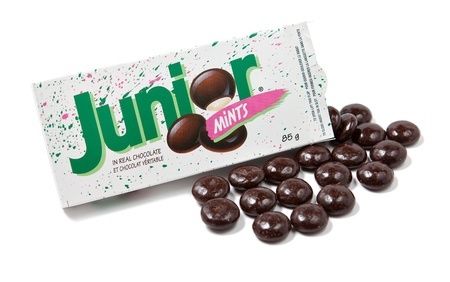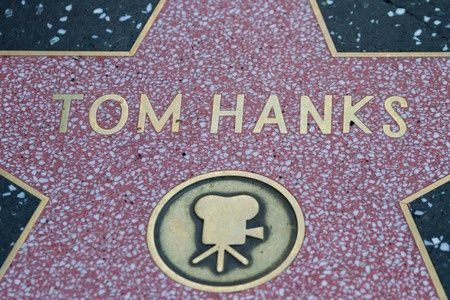As a movie fan, heavy-handed product placement can be a drag.
Nothing’s worse than being jolted out of enjoying a film by the crude and sudden presence of a thinly veiled sales pitch. It separates you from the art that went into making the film and transforms you – without your permission – from a consumer of art into a consumer of advertising.
From a marketing perspective, on the other hand, I can’t help but respect the effectiveness of the strategy. For decades product placement has been an important tool for medium and large-sized brands to get their product seen by movie-going audiences. The tactic is especially useful for iconic film franchises, like the James Bond and Back to the Future series. Audiences revisit these films hoping to see recurring characters and themes, callbacks to past references, and inside jokes; this type of chronologically connected viewing experience lends itself well to product placement.
When it’s done right, product placement can help make the story feel realistic while simultaneously giving the brand good exposure. The best way to achieve this is to create a relationship, between story and brand, of shared authenticity. When the artistic aims of the film, television show, or music video aren’t compromised by the presence of a product or brand message, the two can coexist peacefully. Here are three different approaches to that brand-art relationship – all successful and authentic in their own way.
Adidas – Run DMC
Hip hop loves fashion; fashion loves hip hop.
The two worlds mesh naturally; certain fashions and brands signify a cultural status that hip hop reinforces and strives for. It’s a music born out of overcoming struggle, and often times the clothes its creators wear are noteworthy pieces of proof of that struggle’s ultimate success. In the case of Run DMC’s “My Adidas” video in 1986, the importance of the fashion bled not only into the video but the subject of the song itself.
In the words of founding member, Darryl “D.M.C.” McDaniels: “[‘My Adidas’] was a song that was about our sneakers, but it was bigger than just talking about how many pairs of sneakers we had. It came from the place where people would look at the b-boys, the b-girls, and go, ‘Oh, those are the people that cause all the problems in here … Those young people are nothing but trouble makers…’ judging the book by its cover, without seeing what was inside of it.”
So, the sneakers serve as a vehicle for dismantling lazy and harmful stereotypes. Run D.M.C. and their fans understand that their fashion choices should be seen as a way to galvanize communities and embrace common struggles – not disregarded as vain or consumeristic. The endorsement this song created brought the band huge financial success, but that was only after the fact. In other words, this example of product placement is so important because it came about completely organically, the song wasn’t titled as such as a means to an endorsement check – it was an artistic choice that represented shared cultural experience. So, although (or perhaps because) it wasn’t intentional, “My Adidas” deserves a spot on this list because it represents an artful, culturally relevant form of authenticity.
Junior Mints – Seinfeld

Kramer, Seinfeld, “The Junior Mint”
Another way for product placement to feel authentic is by becoming a part of the story. This is a delicate balance. Sometimes, a Coke can is just a Coke can. Other times, it sticks out like a sore thumb and detracts from the narrative. If it is written into the storyline in a way that feels organic, it can lend a thread of reality to what we’re watching. After all, we live in a world filled with brands, and if the story goes out of its way to avoid including them, it feels inauthentic in the opposite direction, which isn’t any better.
In the world of comedy, this can be taken advantage of for laughs. While self-seriousness is something we accept with dramatic actors – it’s an asset, even – comedic actors must avoid that haughtiness at all costs. Writers, actors, and brands can all poke fun at themselves to great comedic effect. One comedy series that was surprisingly adept at this was Seinfeld. Voted the best television show (in any genre) of all time by TV Guide Magazine, Seinfeld did a lot of things right, and its handling of product placement was no exception. The best example of this comes from the episode, “The Junior Mint.” In it, Kramer spends most of the episode offering other characters Junior Mints to no avail, culminating in Jerry pushing the box away while the two are watching a major surgery in a hospital observation deck, propelling the small chocolate mint into the patient’s organs.
The outlandish scenario and unpleasant ending scared away bigger candy brands like M&M’s and Lifesavers, but the folks at Junior Mints were happy to play along. The partnership ended up being perfect, as Junior Mints’ niche market share contributed to the absurdity of the comedy, while the exposure gave their brand a boost in front of the millions of Seinfeld viewers.
FedEx – Castaway
In the film Castaway, starring Tom Hanks and directed by Robert Zemeckis, the protagonist spends the majority of his screen time stranded on an island after a plane crash, struggling for survival. He embarked on the tragic plane ride in a work capacity, as a quality control supervisor for FedEx. His only companions on the island are inanimate: FedEx packages that were meant to be delivered upon landing. Ultimately, they feature heavily in the plot development and emotional weight of the film. It’s Hanks’ character’s overbearing work schedule that causes friction with his marriage in the first place, the items serve him well on the island (one of them even functioning as his costar), and his insistence on delivering the last surviving package once he returns to civilization works as a perfect denouement.
This is an example of product placement working to its full potential. It didn’t involve any major expense on FedEx’s part either. It was more a matter of Zemeckis’ desire to avoid an unrealistic, “phony trans-global letter delivery service, with some Hollywood fake logo and all that. It wouldn’t seem like it would be real.” So the logo stayed real, the packages got delivered, and we even got to meet the actual CEO of FedEx, who makes a cameo towards the end.
While Zemeckis is hesitant to even refer to the agreement as ‘product placement,’ he is really just showing his aversion for the typical, inauthentic version of product placement. This was far from that. Much like with the Seinfeld example, the arrangement here served both parties well. It allowed the story to unfold in a realistic manner, while FedEx got to have its name and image plastered all over one of the biggest blockbusters of the year. Even though there were initial reservations – the plot does center on a company plane crashing, after all – FedEx was smart to allow the placement. The packages were symbolic for hope and civilization during his time on the island and when he returns, he fulfills his duty as a remarkably reliable FedEx employee. Couple this with how authentically and organically the brand was integrated into the storyline and everybody wins.
Except on Oscar night, that is – when Hanks lost to Russell Crowe for Best Actor.



